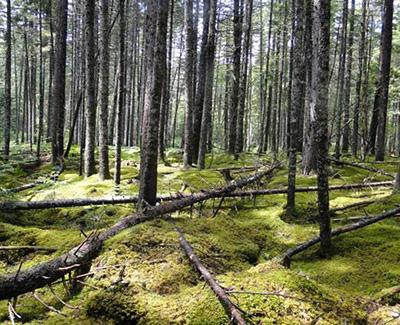Effects of Forest Type and Stand Characteristics on Seasonal Abundance of Forest-floor Invertebrates

To better understand effects of forest management on invertebrates as food for vertebrates, NSRC researchers measured differences in abundance of insects and spiders within four commercial forest stands in Maine: even-age spruce plantation and even-age natural regeneration (both 30-years-old) and mature spruce and mature hemlock (both >80 years since harvest). During spring and summer, researchers sampled insects and spiders using pitfall traps and branch sampling. They determined food use of ground and foliage foraging birds through crop (food storage organ) and fecal sampling.
Researchers found significant differences in invertebrate abundance among forest types, with spider abundance greatest in natural regeneration, ground beetles greatest in the spruce plantation, and ants greatest in mature spruce. After a peak in late May, there was a significant seasonal decline in spiders. Small ground beetle abundance was greatest in day-time samples while large ground beetles were greatest in nocturnal samples. In bird crop and fecal samples, moth and butterfly larvae, beetles, and spiders appeared to be the most commonly used foods.
Since invertebrates form the base of most forest vertebrate food webs, understanding how forest management practices impact abundance and availability of food can help managers mitigate impacts of silviculture on habitat quality for vertebrates. Facing possible changes in tree species composition in the Northern Forest from invasive species and climate change, this study provides a baseline of the invertebrate-bird food web within four Northern Forest habitats. Since each of these habitats either persisted through or resulted from the last spruce budworm outbreak, this study may inform best management practices for the impending budworm outbreak.
